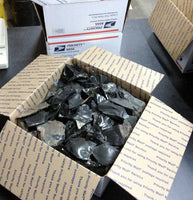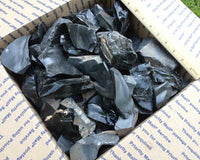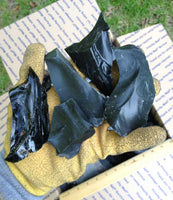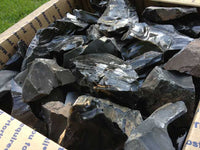Obs/Dacite Chips and Chunks - Medium Flat Rate Box - Free Shipping
Medium USPS Flat Rate box packed SOLID with 15-18 lbs of small, thick, and/or odd shaped pieces of Obsidian and Dacite. Great for getting a lot of experience without the high cost of 'Grade A' stone. Mostly small point practice material. Box price includes shipping within the domestic United States.
Do not expect high quality material in this box. Please view our higher grade material for bigger/nicer knapping stone.
Priority Mail Postage within the United States is pre-paid and included in the price of this box of Chips and Chunks. Limited boxes available.
International Customers: This box is not available for shipment outside of the USA due to USPS weight cap restrictions.
Warning: Obsidian and dacite are some of the sharpest types of knapping stone available. Please exercise extreme caution when unpacking and handling this material because it will make you bleed very easily. Gloves and proper eye protection are required when handling this material.








